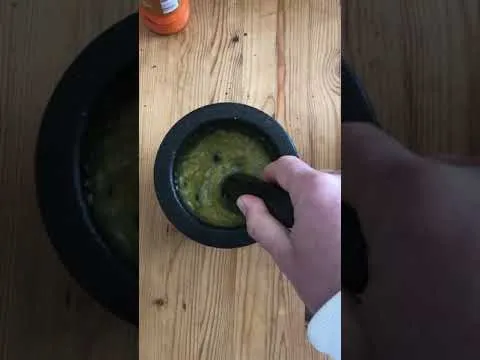People in parts of the world where food is mass-produced cannot always stomach and appreciate foods with strong flavors. One example of this is basil pesto. Basil pesto made with homegrown basil and made with a mortar and pestle does not taste the same as the store-bought one. A famous line by Chef John from YouTube goes something like this: "This [pesto] will actually be too intense for some people. [This pesto] is the truth and not everyone can handle the truth." (At the 7:20-ish minute mark in his video.) This goes for Aioli as well. I will bet some money on the following: Most people who have had "aioli" had mayonnaise with garlic, which is not aioli. That is not to say that mayonnaise with garlic is not good, as a burger sauce it works great. But that is not true aioli. Real aioli, as in the case with basil pest, and according to Chef John, this stuff is not for everyone.
That said, in this post, I will share with you how I make aioli, and how I use it on a sandwich. Aioli, like pestos, is technique-based. But it is easier than mayonnaise, or so I think. So if you like garlic, and want to make a sauce with the consistency of mayo but with the intense flavor of garlic, you will want to make this sauce. I will show you how I make this sauce and how I use it. Included is a short video of how the emulsification process happens in the mortar and pestle.

Ingredients
For the aioli you need three basic ingredients:
- Garlic,
- Oil (I use half olive, half canola oil),
- Salt.
Additional (non-traditional) ingredients
- Lemon (peel and juice),
- Dijon-styled mustard.

Method or Technique
Most sauces are based on a simple principle: emulsify water and fat/oil. With aioli, you essentially emulsify garlic (water) with olive oil (oil). This happens in the mortar and pestle. If you make aioli this way, the flavor will be way different from when you make it in a blender. The action of "smashing" (essentially bruising) the garlic releases a unique and very intense flavor. I will show the steps I took to make this sauce and a short video of how I made this sauce.

Step 1: Make Garlic "Mush"
I add the whole cloves of garlic and some salt. This adds as an abrasive substance that will help you crush the garlic. You want to make garlic mush in which you will emulsify the oil.



Step 2: Add the oil slowly
This sauce does not have egg in it like a mayo. This makes the emulsification process much easier. With egg, the chances of having a split sauce because you added the oil "too fast" is always a problem. In the video below, you can see that this is not the case with aioli. The process of emulsifying the oil and garlic is very simple, and you do it in the mortar and pestle.


Additional step
I like to add dijon-styled mustard and lemon juice. This is not authentic, but for the purposes of my sauce, I wanted the extra flavors.


Another additional step
You can run this sauce through a fine-mesh strainer if you want it smooth. There are times when you need a smooth sauce, like for dipping french fries in it. But for today, I did not want to dirty the strainer as well. So I skipped this step.
Making the sandwich
I love open-faced sandwiches. I had some leftover ingredients which I used. Yesterday, I grilled some onions and tomatoes on an open fire. I used them in combination with the aioli and I topped it on a sandwich. I also added some freshly picked Chickweed (Stellaria media). The taste was very similar to bruschetta, except the tomatoes and onions were cooked.




(If you noticed, I swopped the bread from the first and second image! The one I essentially used was a little burnt, but I love the taste of burnt bread (sourdough bread without sugar). It did not make for a nice image, hence the swap!)

I hope you try this recipe! It is something special and has a totally different taste from the things you buy in the shop. At least, to me! Have you ever tried to make your own mayo or aioli? Let me know in the comments!
